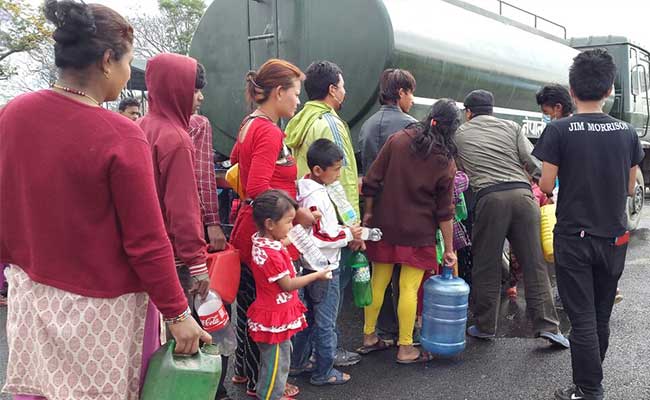11 years ago
Nepal is struck by one of the most devastating earthquakes in its history. Thousands of lives are lost and there is widespread destruction. NDTV's Ketki Angre travels to capital Kathmandu and other remote parts of the Himalayan country to give first hand account of the devastation.
Celebrations in the aftermath of a tragedy. This family didn't want any pictures taken of the celebrations because of the tragedy Nepal is still coping with. The wedding was a low key affair.
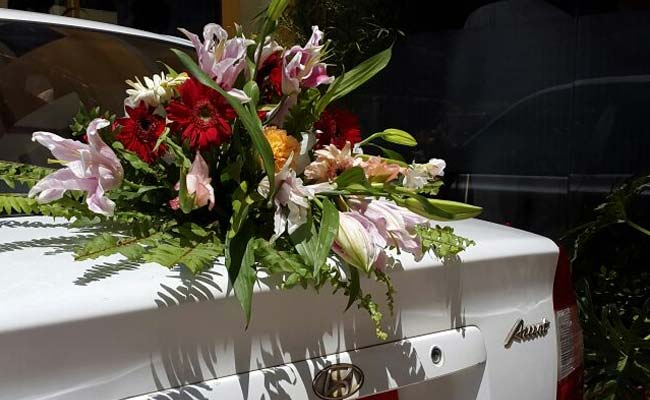

'This is how we do it!' That's what these two seem to be saying. In the relief camp, children have made new friends and are trying to get used to their tents that are now their homes, at least till they can head back to their own houses that have either been destroyed or are too dangerous.
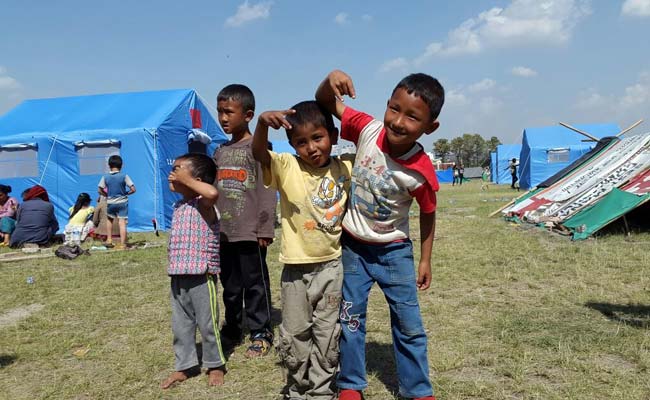

In relief camps, people share not just their food with their pets but also their temporary shelters.
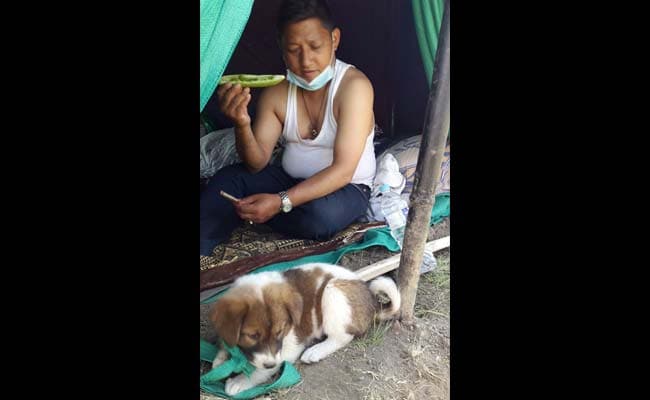

Play and learn: little girls play at a relief camp in Kathmandu that has now become their home. Their homes are too dangerous to live in and they spend their whole day out in the open. Going forward, education is going to be a key concern for Nepal as many schools have either been damaged or are temporary shelters for residents.
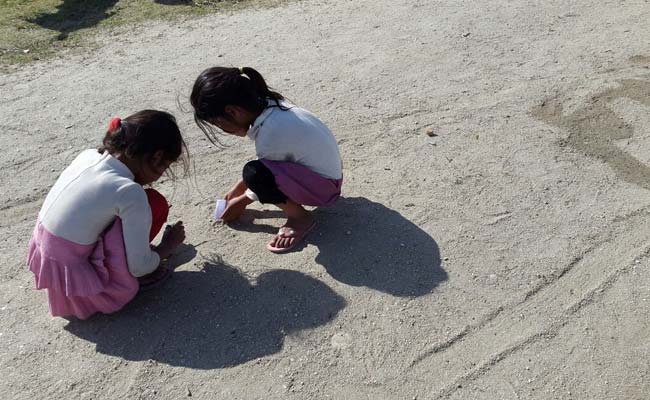

This child friendly space by the UNICEF at the Turi Khel relief camp in Kathmandu keeps children engaged in play, a crucial step to ensure children who are so vulnerable in the post tragedy scenario are cared for and engaged which has an important role in the process of healing as well. Children sing, dance, draw and colour among other activities that keep them occupied at the same time working on getting children out of the trauma.

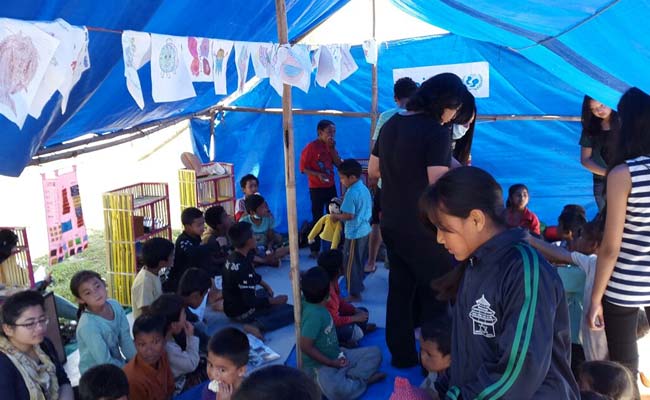


Instructions pasted in relief camps in Nepal listing the dos and don'ts to avoid outbreak of diseases.
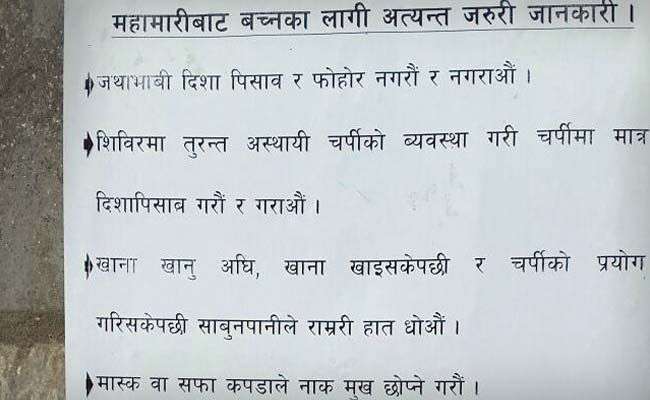

A common sight in Nepal. Lines to get access to fuel.
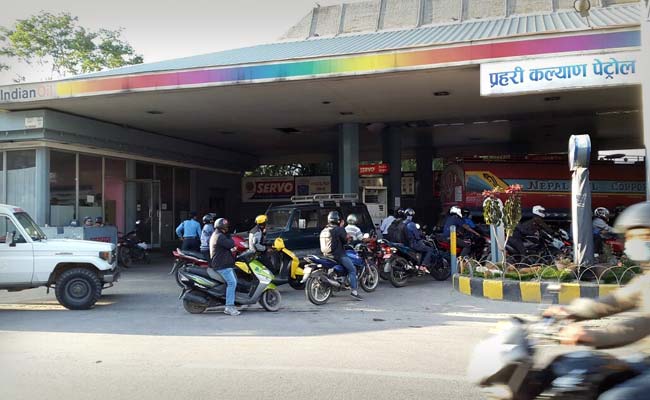

The supporting pillar on the ground floor gave way within seconds of the quake and the 5-storeyed structure, now tilted rests on the neighbouring building. Mr Roy who owns the shop on the ground floor escaped without any injuries but is worried his life's work has been lost.
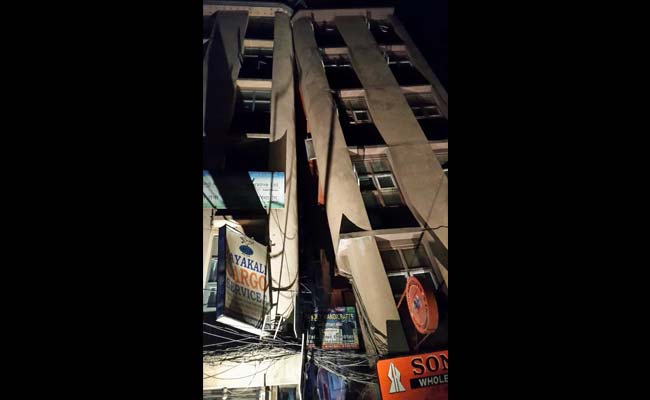

Mountaineers Arjun Vajpai and Ferran Lattore were at the base camp of Mt Makalu when an avalanche struck. Fortunately they escaped unhurt. Seen here they narrate what they experienced. They are grateful to the Nepalese Army for mounting a rescue.
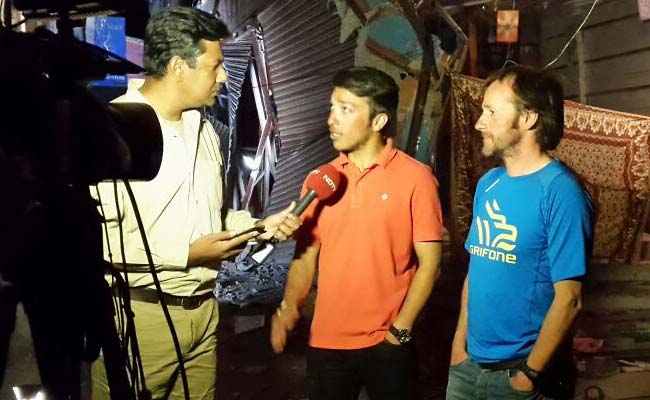


Divyanshi (which means goddess) at a field hospital where she was born. Her parents were playing cards when the ground under their feet trembled and a massive 7.9 magnitude earthquake devastated Nepal. She was born exactly a week later, blissfully unaware of the odds her parents braved during the aftermath of the earthquake.
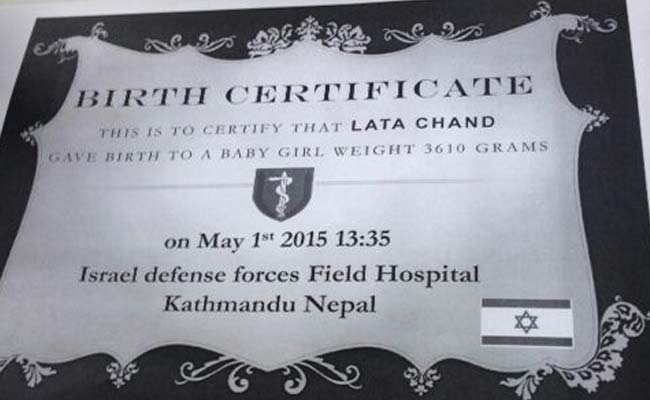
For babies born at the field hospital set up by the IDF, this is the provisional certificate of birth. This will later be added to the records of the Nepal government and and a Nepalese birth certificate will be issued.
Pets are common in Nepal. Even in relief camps many families share their limited living space with their canines.
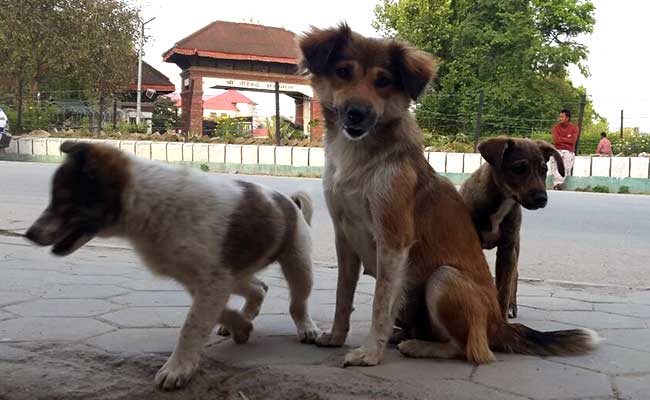

He is just a day old. His older brother and mother were trapped inside their home when the earthquake struck. Luckily when the trembling stopped his mother and brother managed to escape from their home.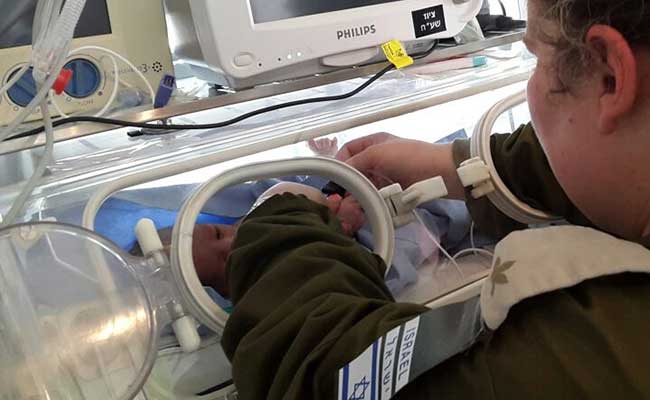
She was stuck inside her home in a village in Sindhupal Chowk. A portion of the wall fell on her leg and she was trapped inside and couldn't escape. After a week in hospital, she has taken her first steps today and is now going home.
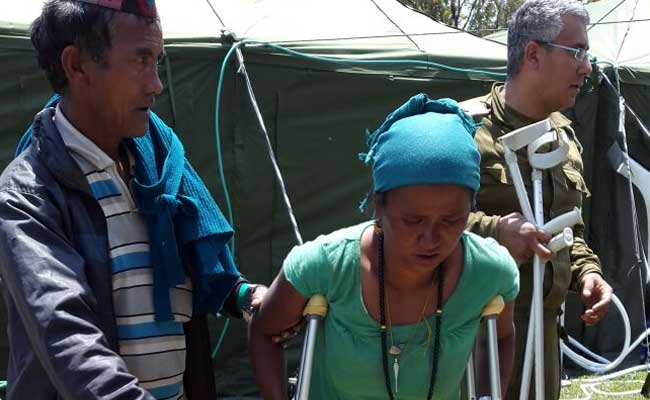

Born exactly a week after the quake, her parents have decided to call her Divyanshi which means 'goddess'. Her father is a doctor with the Nepal Army and has got the rare day off to be with his wife to witness the birth of his daughter.
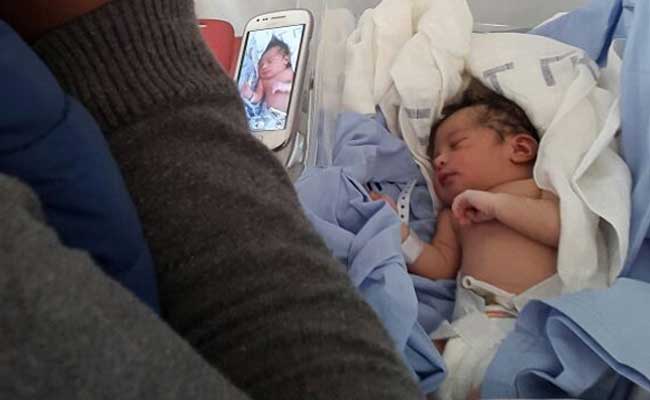

These four were at Everest base camp when a massive avalanche came their way soon after the quake. They ran with a cloud of snow descending on them. Hiding behind a tent saved their lives. They feel they have got a second life and are certain they will return to summit Mt Everest next year... their way to contribute to Nepal.
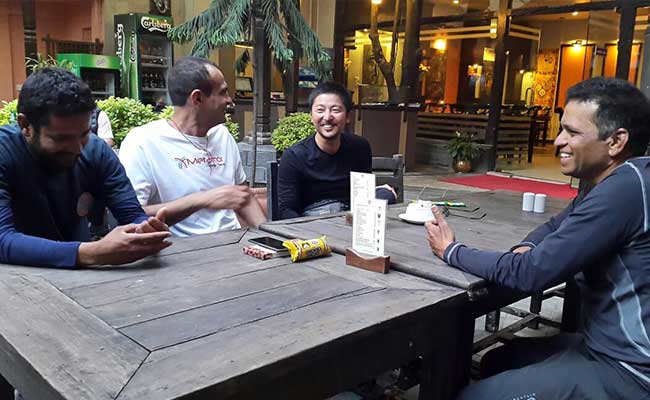

A group of youngsters get together in Thamel area of Kathmandu asking for help to rebuild Nepal.
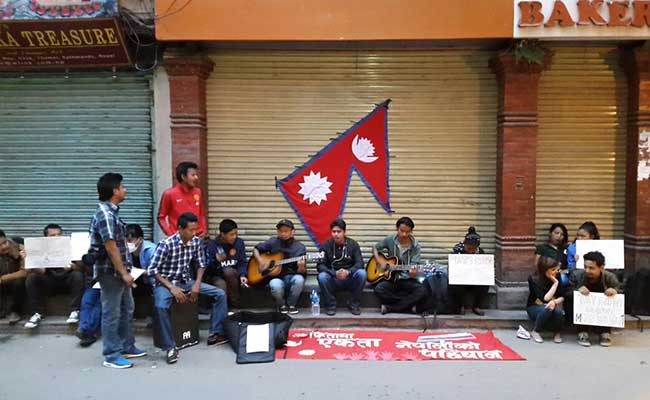

Two-year-old Khushboo loves her latest toy. It's a soap water bubble maker and her eyes light up everytime she sees the little bubbles escape. She has fever and a bad cold after sleeping in the open for a week braving the rain and weather. She is at the doctor's to get a check up.
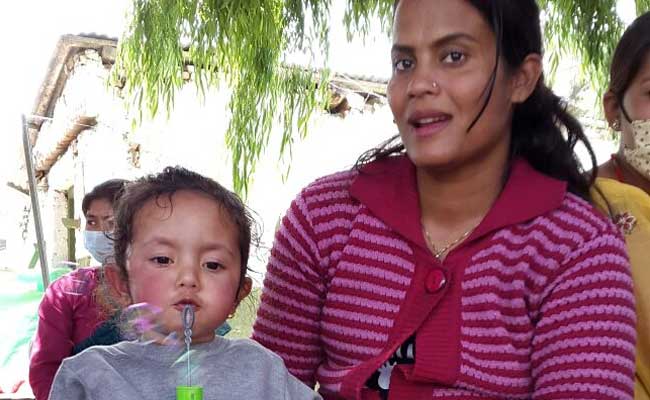

Kavita Kadkha was pulled out of this cavity after being trapped under the rubble for 5 days. She survived without any food or water. Her rescue was also difficult because she was trapped behind a man who had died. Rescue workers first had to extricate the dead body before they could reach to her.
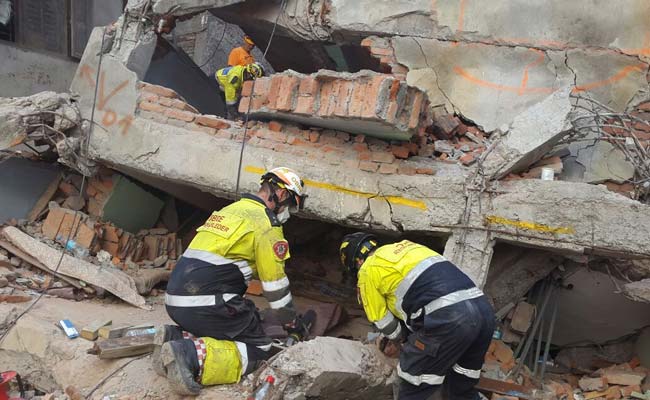

Every team that works at rescue sites follows a marking system that puts the basics on the wall, quite literally. 'No Hazmat' means no hazardous material at rescue site. The numbers on the right indicate dead bodies pulled out of the rubble. The number on the left reflects a live rescue. A woman in her 20s was rescued alive from this site after 5 days of being trapped under the rubble.
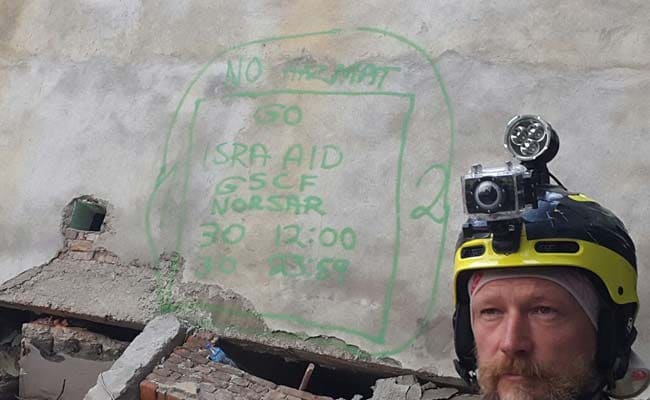

Set up by Israel, every patient who is admitted here is assigned a barcode and the patients' papers and detailed medical status can be accessed by doctors anytime on their iPads with the help of that barcode. It makes the system completely paperless. Even lab reports are electronically accessed and transferred.
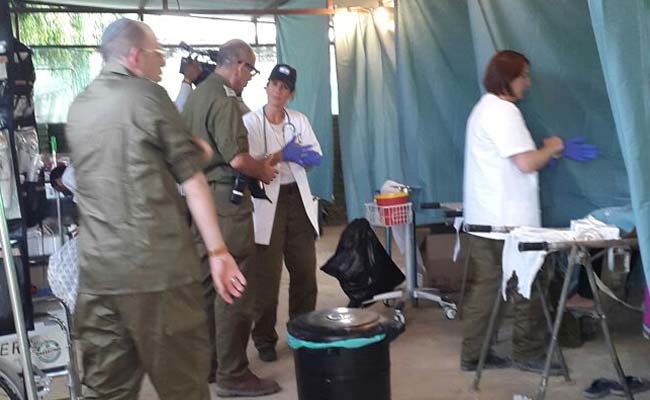

These are the residential quarters at the IDF field hospital set up in Kathmandu. It has the capacity to take in up to 100 patients and is fully equipped with everything from OPDs to ICUs to path labs and operation theatres.
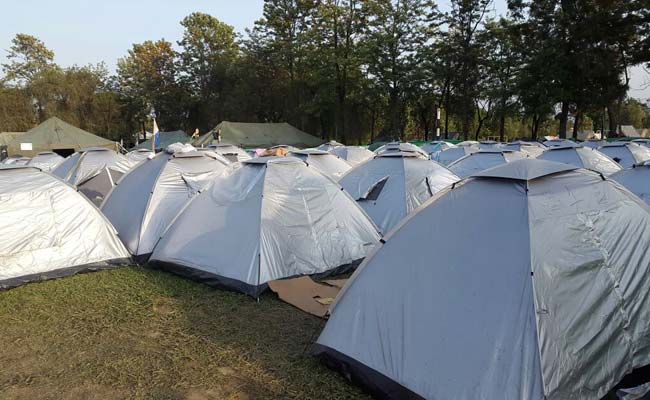

NDTV's Azam Siddiqui at the rescue site in Gongabu where a woman was rescued alive after five days. It was a joint operation by rescue teams from Israel and Norway that helped pull her out.
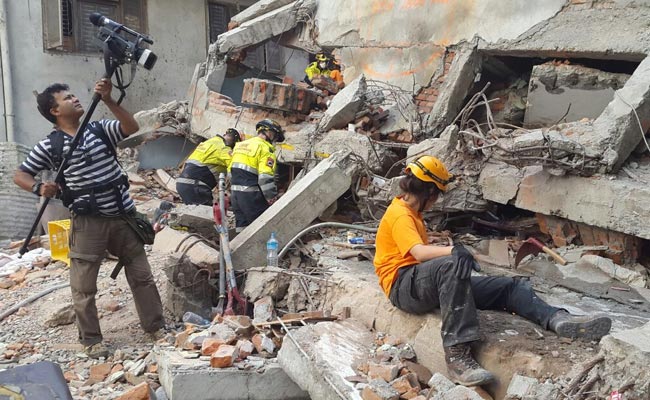

NDRF (National Disaster Response Force) personnel gets ready to operate a drone. It has a camera on it that gives the operator on the ground an aerial view of the area.
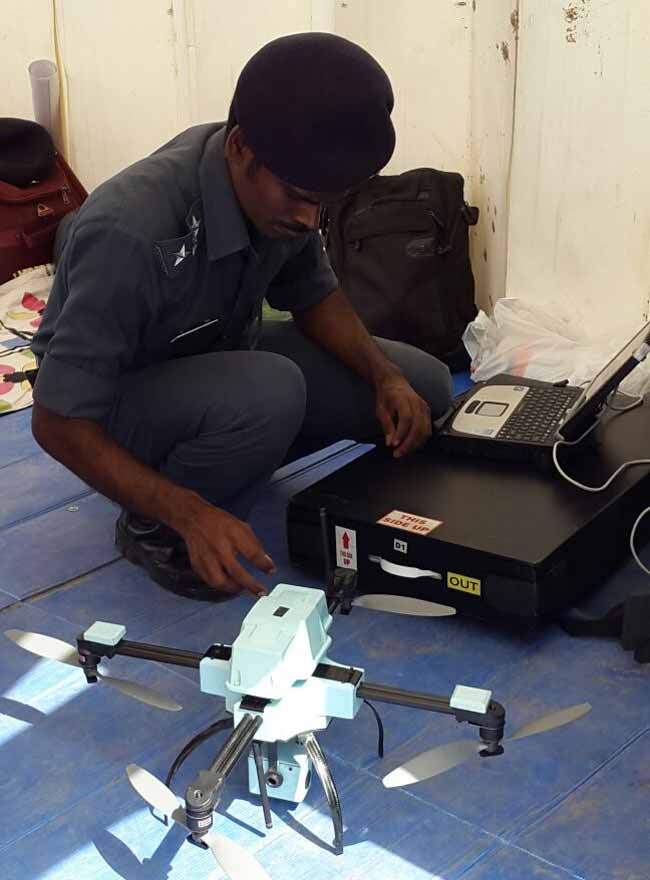

A multi-storeyed guest house that is now tilted to one side in Gongabu area of Kathmandu. The bottom three floors have collapsed and the top floors are now at a dangerous inclination, making it risky to even attempt rescue and retrieval of bodies here. An Indian NDRF team is working at this site.
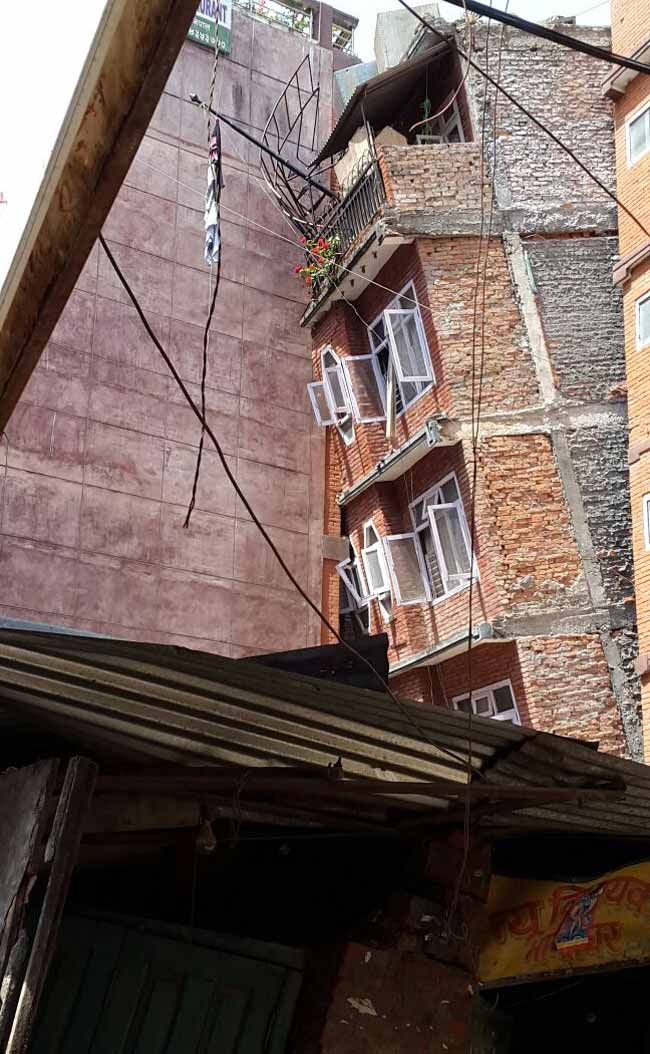

NDRF (National Disaster Response Force) team uses a drone at a site in Kathmandu. It gives the team on the ground, a good aerial perspective of the area they are about to venture into. Drones are especially handy when ground access is either blocked or cut off.
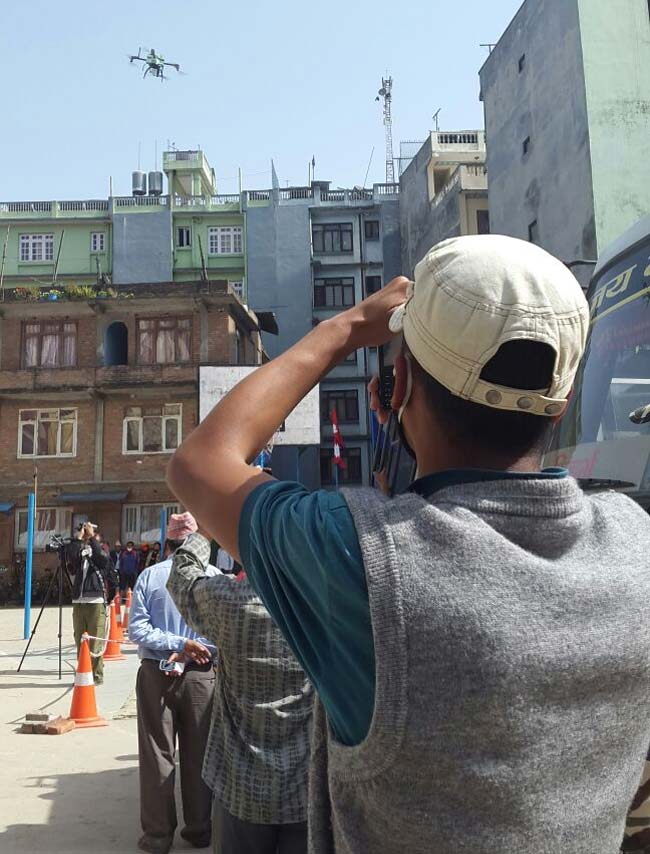

22-year-old Prayas standing in front of his home. It's unsafe to venture any closer. Adding to his grief, he has lost at least 15 friends in the rubble in front of his house. They were all participating in a blood donation camp and got buried in the rubble in Durbar Square in Basantpur.
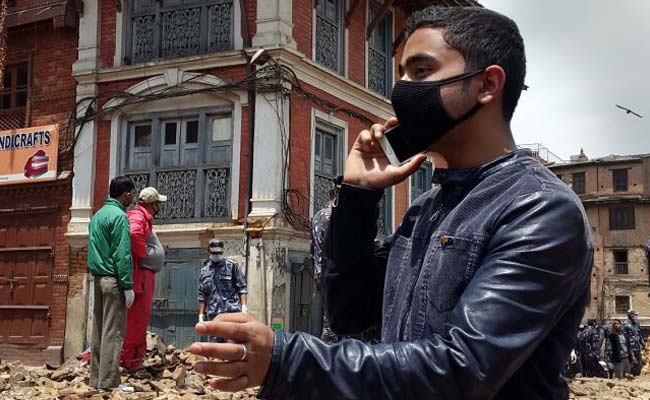

Ramila Shrestha and Sanjib Shrestha. Both went to the viewing gallery on the 8th floor of the iconic Dharahara Tower in Kathmandu. The tower collapsed and they fell almost 200ft to the ground. Miraculously they both have survived with injuries. They hadn't told their parents who they were going with but now they both enquire after each other every time the doctor comes visiting. Their families know they were seeing each other and Sanjib, still bashful, told us he sees a future with her. Doctor was heard telling them 'your secret is now open'.
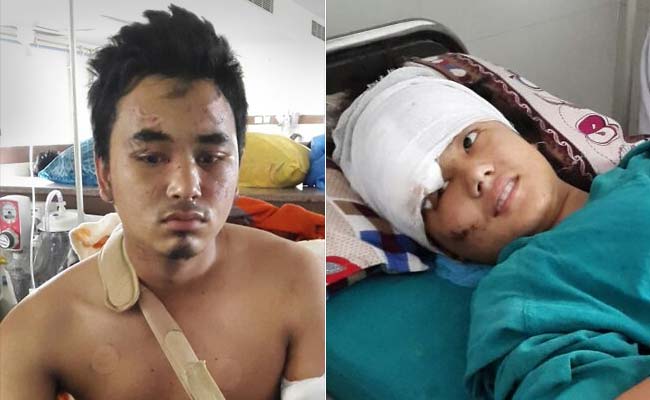

Basantpur Durbar Square is virtually unrecognisable. Known for its heritage structures, this area is in ruins today. Many people are believed to be dead under the collapsed temples here and the massive cracks make other structures as unsafe.
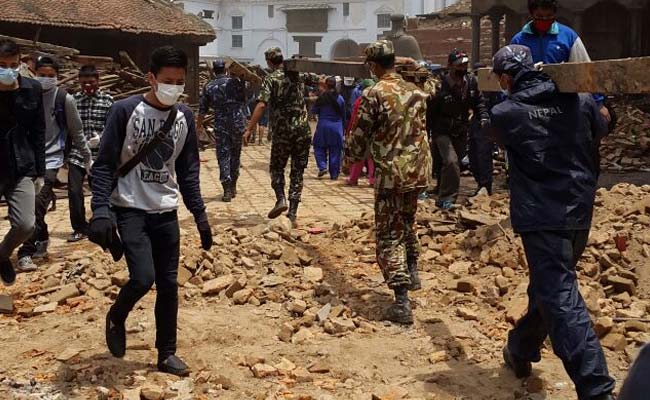

In the bylanes behind Durbar Square, broken homes and dangerously tilted structures stand shoulder to shoulder. It's not safe to even attempt pulling out belongings from the buildings that look seemingly intact since the way to those goes through such dilapidated homes.


It Was a School, Now a Shelter for Many
14-year-old Rahul Khatri and his friends now call their school home. The classrooms at the Basundhara Academy in Kathmandu have turned into temporary shelters for residents of the area after repeated aftershocks and cracks on building walls following the devastating 7.9 earthquake forced many to flee their homes.
"I have to live in the school since my home has been destroyed and I have nowhere to go," Rahul said.
There are more than a hundred people living in this school alone. The widespread damage caused by the earthquake has turned a majority of schools into makeshift relief camps where both teachers and parents work together, right from cooking to everyday chores.
"My students and I are taking shelter in the same school. It's the same story in most government schools. Homes are so unsafe and even if the buildings are intact, people are too scared to stay in those," said Sandeep Dongana, a mathematics teacher at the school.
At a relief camp in Kathmandu, we asked Rajan, 10, if he liked going to school. "But it doesn't exist," he said, to which his cousin, 12-year-old Bibek Adhikari said, "The school walls have collapsed. It's not safe to go there. We don't know when it will be repaired."
While most children are happy that their playtime now doesn't come with any restrictions, parents are worried about their education. "It's okay to stay in these schools for now, but we have to also think about vacating them soon. It's also about the future of our children and their education," said Sapna, who has also taken refuge in a school.
Nepal is fighting battles on multiple fronts and though, education may not be the top priority in the immediate aftermath of the earthquake, getting back to school may help children overcome the trauma they have witnessed.
14-year-old Rahul Khatri and his friends now call their school home. The classrooms at the Basundhara Academy in Kathmandu have turned into temporary shelters for residents of the area after repeated aftershocks and cracks on building walls following the devastating 7.9 earthquake forced many to flee their homes.
"I have to live in the school since my home has been destroyed and I have nowhere to go," Rahul said.
There are more than a hundred people living in this school alone. The widespread damage caused by the earthquake has turned a majority of schools into makeshift relief camps where both teachers and parents work together, right from cooking to everyday chores.
"My students and I are taking shelter in the same school. It's the same story in most government schools. Homes are so unsafe and even if the buildings are intact, people are too scared to stay in those," said Sandeep Dongana, a mathematics teacher at the school.
At a relief camp in Kathmandu, we asked Rajan, 10, if he liked going to school. "But it doesn't exist," he said, to which his cousin, 12-year-old Bibek Adhikari said, "The school walls have collapsed. It's not safe to go there. We don't know when it will be repaired."
While most children are happy that their playtime now doesn't come with any restrictions, parents are worried about their education. "It's okay to stay in these schools for now, but we have to also think about vacating them soon. It's also about the future of our children and their education," said Sapna, who has also taken refuge in a school.
Nepal is fighting battles on multiple fronts and though, education may not be the top priority in the immediate aftermath of the earthquake, getting back to school may help children overcome the trauma they have witnessed.
A Long Way From Home
It's been five days since the earthquake and Prayas is keen to go back home. Police posted in the area have always stopped him from getting too close to his home because of the widespread rubble and for his own safety.
As he walks through the square, he talks of memories of the square. "All the big festivals would be celebrated here, the traditional ceremonies, dances. These temples were so beautiful, so historic. All of us friends would come here often. It was a lovely place just to sit and relax," he says.
15 of his friends are missing, trapped under the rubble right in front of his home. There is little hope that any of them would have survived. A noisy excavator tries to clear the rubble but that could take weeks.
"I was at our shop," he says, recalling the events of last Saturday. "15-17 of my friends had gone for a blood donation camp that was organised in Durbar Square. They must have got no time to save themselves," he says shaking his head.
Prayas walks up to a Nepal Army official and asks him how many bodies they have pulled out from the rubble. His answer is not heartening. "It hurts a lot to see all this. I've lost my friends, I'm living like a homeless and everything I knew and grew up with is gone. How will we be able to rebuild from here?" he asks. It's a question that all of Nepal is asking.
Till last week, 22-year-old Prayas Ghimire and his family lived in a 2-storeyed house in Kathmandu's heritage Basantpur Durbar Square area.
This morning, their makeshift tarpaulin shelter went missing and they were forced to move to another tent for the day at a relief camp in Turi Khel Ground in Kathmandu.It's been five days since the earthquake and Prayas is keen to go back home. Police posted in the area have always stopped him from getting too close to his home because of the widespread rubble and for his own safety.
As he walks through the square, he talks of memories of the square. "All the big festivals would be celebrated here, the traditional ceremonies, dances. These temples were so beautiful, so historic. All of us friends would come here often. It was a lovely place just to sit and relax," he says.
15 of his friends are missing, trapped under the rubble right in front of his home. There is little hope that any of them would have survived. A noisy excavator tries to clear the rubble but that could take weeks.
"I was at our shop," he says, recalling the events of last Saturday. "15-17 of my friends had gone for a blood donation camp that was organised in Durbar Square. They must have got no time to save themselves," he says shaking his head.
Prayas walks up to a Nepal Army official and asks him how many bodies they have pulled out from the rubble. His answer is not heartening. "It hurts a lot to see all this. I've lost my friends, I'm living like a homeless and everything I knew and grew up with is gone. How will we be able to rebuild from here?" he asks. It's a question that all of Nepal is asking.
A house cut right down the middle on Kanti Road in Kathmandu.

(Photograph by NDTV's Ketki Angre)

(Photograph by NDTV's Ketki Angre)
Rushed in to Bir Hospital's Trauma centre, patients are now being brought in from remote areas where the rescue flights are now beginning to reach. 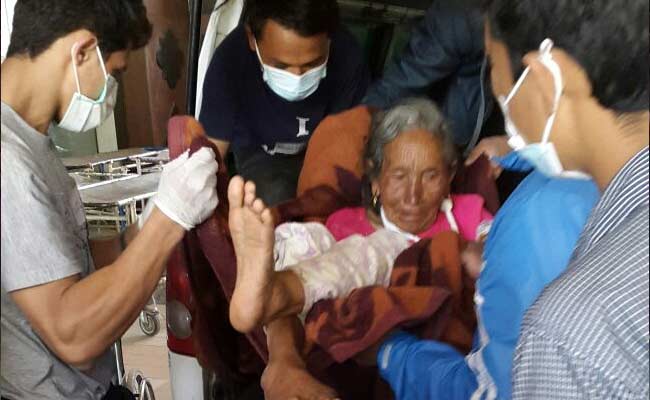

10-year-old Sujan Giri was the centre of attention after an Israeli rescue team gave him an unexpected gift: a soap water bubble maker. That took care of the better part of the afternoon at the relief camp where the boys and their families are staying.
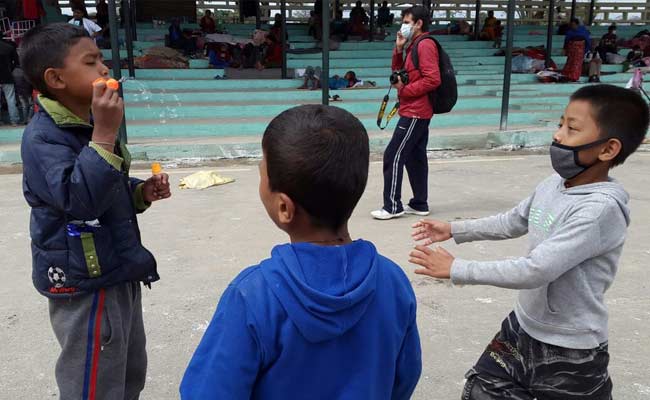

Rushed in to Bir Hospital's Trauma centre, patients are now being brought in from remote areas where the rescue flights are now beginning to reach.
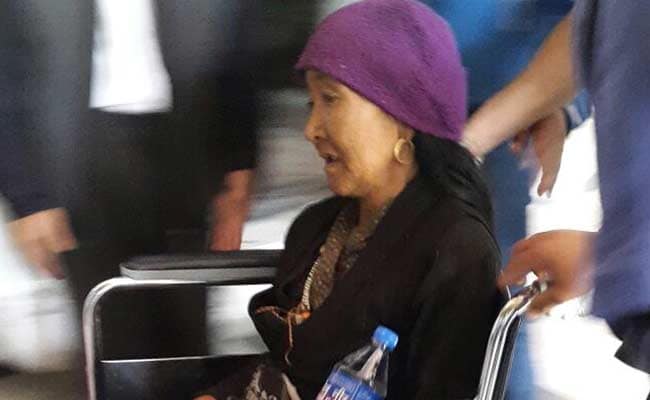

Rammaya Tamang waiting in line to get her blood pressure checked. She has been taking BP medicines for over five years. Staying for now at a relief camp in Kathmandu, she finally sits down as the line increases behind her at a mobile medical camp set up in the Turi Khel camp. 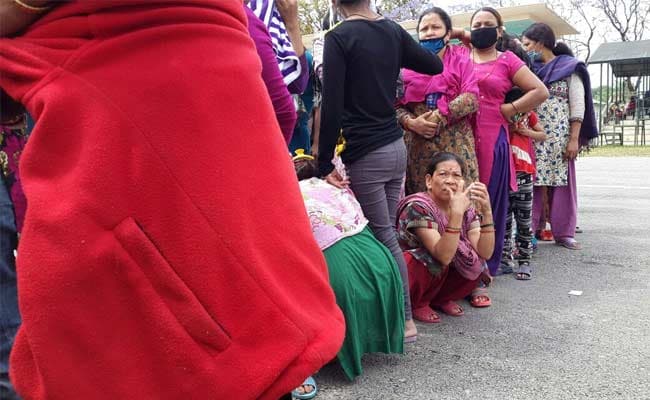

Nepal is feeling the pressure on every system even for performing final rites. At the cremation ghats in Kathmandu volunteers have taken up the task of keeping the ghats clean. For the first few days there were cremations taking place here every few minutes. With thousands dead in the earthquake and its aftermath relatives have to wait for hours to cremate their loved ones.
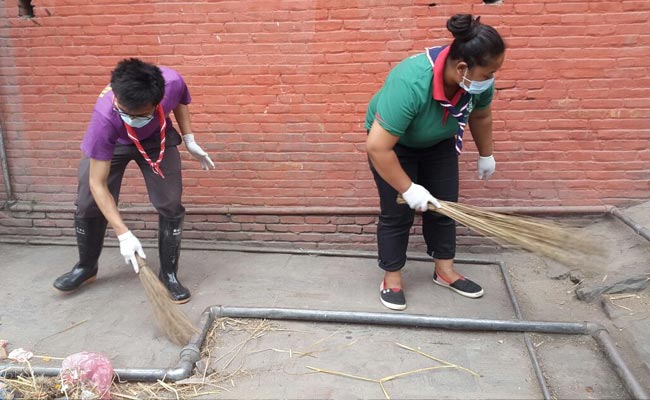

The Krishna temple at the UNESCO world heritage site of Bhaktapur, 12km from Kathmandu, in ruins after the Saturday earthquake.
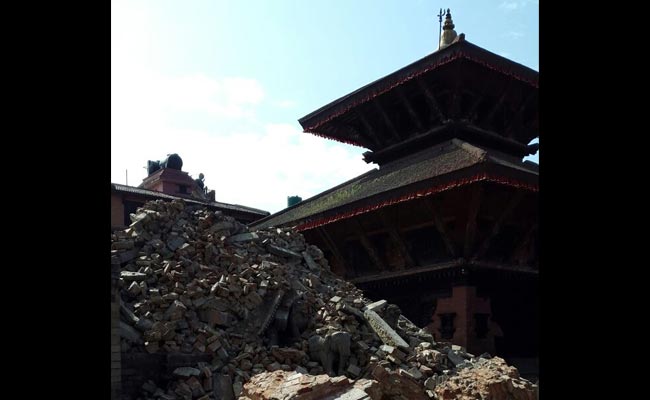

Basundhara Academy in Nepal is now a shelter for residents. A local resident who stays here for now tells us, though Nepal is in the midst of a massive tragedy it is important to make sure children return to school at the earliest.
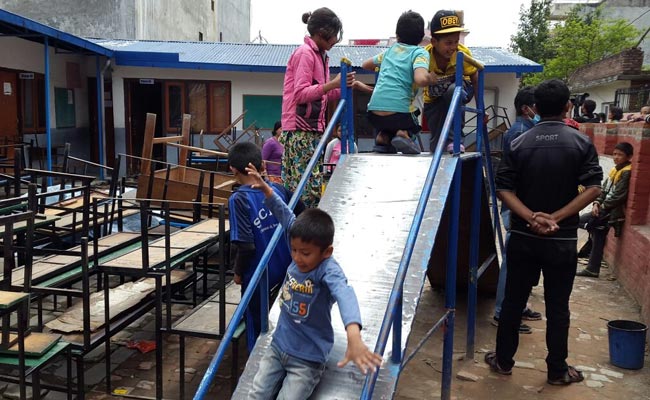

An officer of the Nepal Armed Police guards what's left of the heritage Dharahara Tower in Kathmandu.
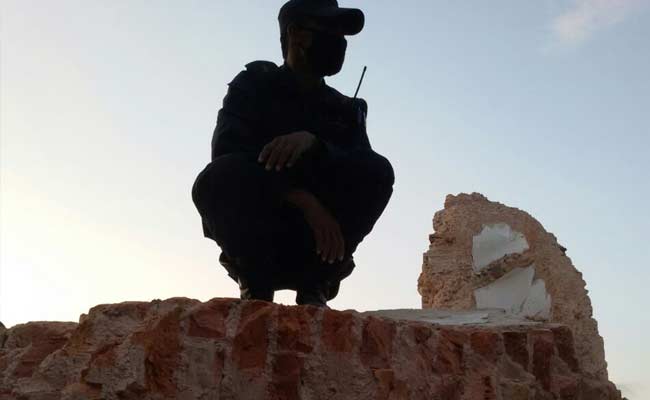
(Photo by NDTV's Azam Siddiqui)

(Photo by NDTV's Azam Siddiqui)
With no electricity, people who are forced to live out in the open have no way to recharge their cell phone batteries. Seen here are citizens who have plugged their chargers onto the NDTV van.

(Photo by NDTV's Azam Siddiqui)

(Photo by NDTV's Azam Siddiqui)
People who are looking for their loved ones are anxious for any news on their whereabouts. A missing persons poster in Kathmandu for a Polish citizen.


Schools are shut in Nepal as many have been converted into shelters for residents. Benches are out in the open and classrooms are what many people now call home. These children are keen to get back to school but when that will happen is not certain. For now, they are happy that the slide doesn't come with any limited playtime timetable.
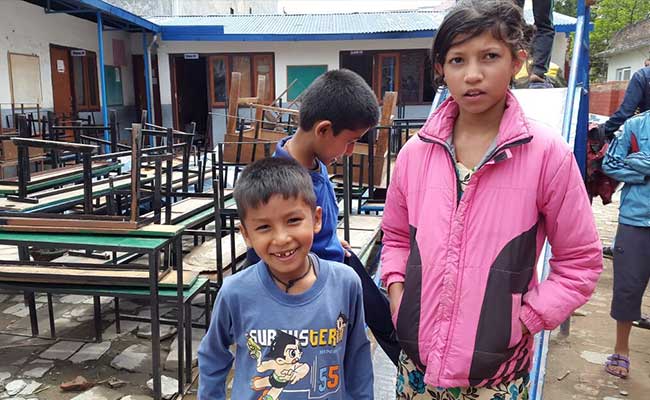

A Tragedy and a Miracle in a Flattened Village
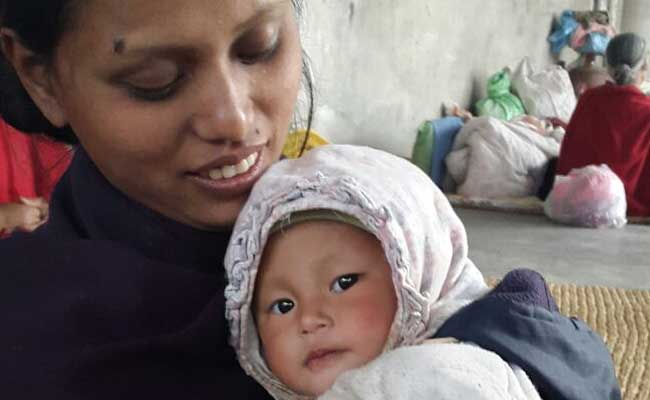
With a disarming smile that's hard to miss, 9-month-old Ankita is a silver lining in a picture of death and devastation in Nepal. Her father Dhirendra's presence of mind is the reason she is alive today.
She was asleep on the second floor of their home in Sankhu village, 17 km from Kathmandu, when the quake struck Nepal on Saturday. "He swaddled her, wrapped in a blanket and tied it to an overheard TV cable like a makeshift pulley. He took another sheet and put it over the wire and came swinging down from the thick cable with his daughter," explained Umesh Mansingh, a neighbour.
There is nothing left of their home today and almost the whole village is flattened. Little Ankita and her mother Kavita watch the rubble from the leaking tent as rain lashes the village. More than a 100 people are feared dead here, but just just a few bodies have been recovered.
Among them are three relatives of Bal Krishna, a 40 year old resident. He was hanging on to shreds of hope for three whole days. That wall of resilience collapsed on Tuesday when rescue workers pulled out the bodies of his father, two sisters and two domestic helps. His aunt Subhadra's shrieks pierce the afternoon silence, as the other family members help her to a chair in a makeshift shelter. She is inconsolable like many in the village who have not just lost their loved ones, but have their life's work reduced to rubble.

With a disarming smile that's hard to miss, 9-month-old Ankita is a silver lining in a picture of death and devastation in Nepal. Her father Dhirendra's presence of mind is the reason she is alive today.
She was asleep on the second floor of their home in Sankhu village, 17 km from Kathmandu, when the quake struck Nepal on Saturday. "He swaddled her, wrapped in a blanket and tied it to an overheard TV cable like a makeshift pulley. He took another sheet and put it over the wire and came swinging down from the thick cable with his daughter," explained Umesh Mansingh, a neighbour.
There is nothing left of their home today and almost the whole village is flattened. Little Ankita and her mother Kavita watch the rubble from the leaking tent as rain lashes the village. More than a 100 people are feared dead here, but just just a few bodies have been recovered.
Among them are three relatives of Bal Krishna, a 40 year old resident. He was hanging on to shreds of hope for three whole days. That wall of resilience collapsed on Tuesday when rescue workers pulled out the bodies of his father, two sisters and two domestic helps. His aunt Subhadra's shrieks pierce the afternoon silence, as the other family members help her to a chair in a makeshift shelter. She is inconsolable like many in the village who have not just lost their loved ones, but have their life's work reduced to rubble.
The Indian government has stepped up its relief measures. Seen here the C 130 J Hercules of the Indian Air Force, among the many aircraft that land at the Tribhuvan International Airport every day.
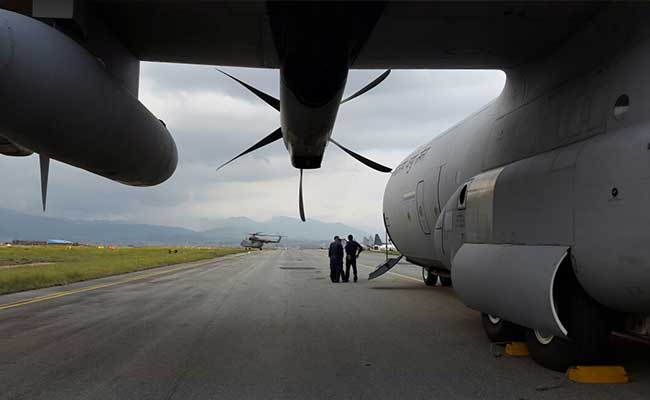

There are many children in relief camps. They keep themselves busy with a game of football. The ball maybe more or less deflated but it keeps their spirits up.


This rescue team from Korea arrived in Kathmandu yesterday. The 'smoke' is from their ready to eat meal boxes. They waited a few minutes for the smoke to subside and took their food packets indoors to eat.
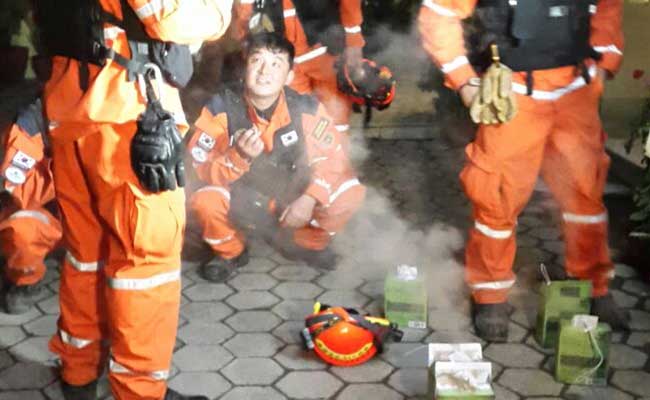

Two tents, a motorcycle, utensils and cooking gas would be a luxury for many in this relief camp in Nepal. But imagine life being reduced to just these few essentials and a 4x4 ft space.


This is an essential morning routine for all those in relief camps in Kathmandu. The Nepalese army tanker comes every morning and people queue up to fill water - mostly just one jerry can or 2 pet bottles that will have to last through the day for everything from cooking, drinking, cleaning.
